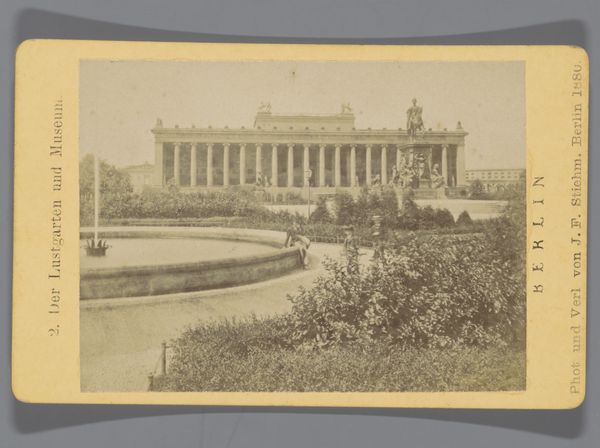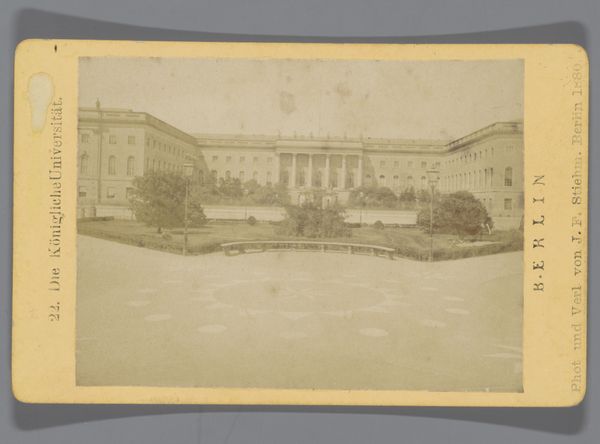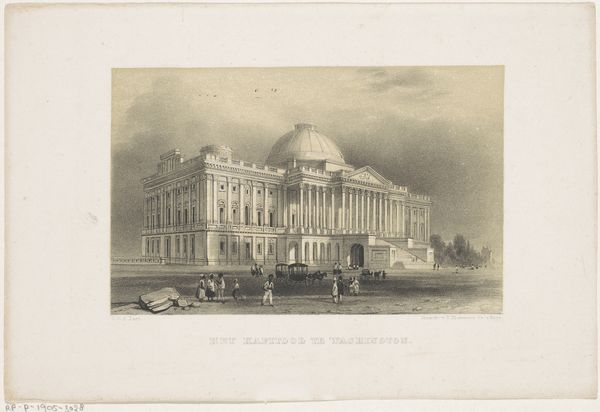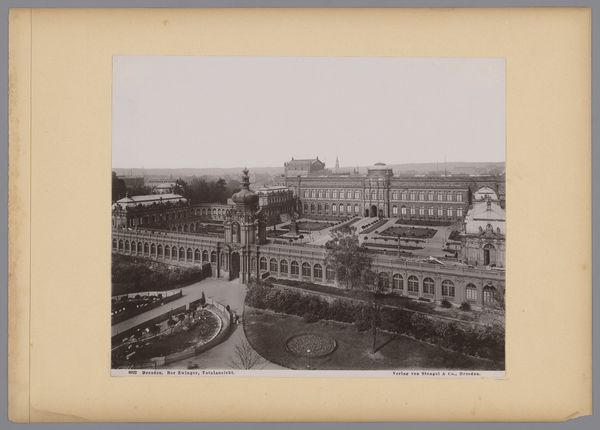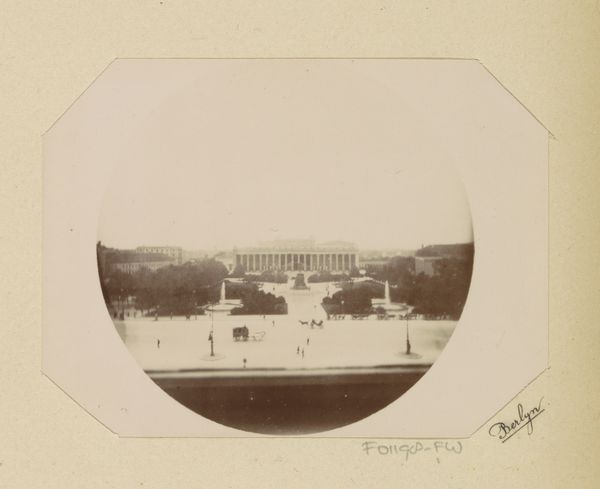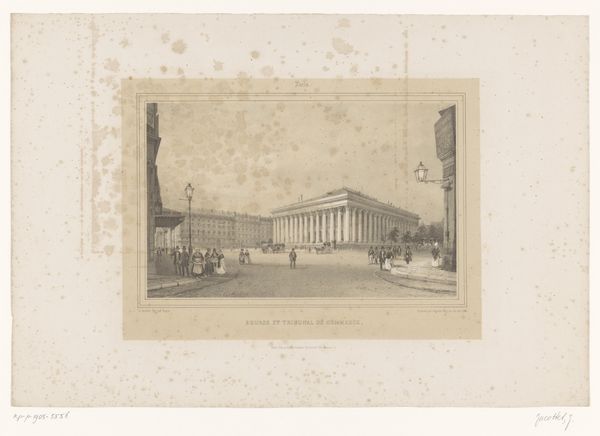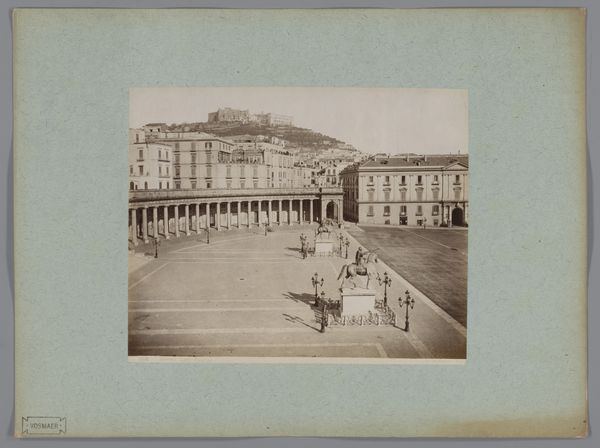
photography, albumen-print
#
landscape
#
photography
#
cityscape
#
albumen-print
#
realism
Dimensions: height 67 mm, width 107 mm
Copyright: Rijks Museum: Open Domain
Curator: Oh, wow. It’s like stepping back in time. There's something deeply melancholic about this sepia-toned scene. Editor: Precisely! This albumen print, captured sometime between 1868 and 1880 by the firm M. Frankenstein & Co., offers us a “Gezicht op paleis Schönbrunn, Wenen” or "View of Schönbrunn Palace, Vienna." The landscape is carefully constructed. Curator: Constructed is right. It feels very ordered, very...controlled. The geometric gardens, the rigid lines of trees leading the eye right to the palace, perched so prominently... There's a sense of almost oppressive grandeur, you know? Like a perfect dollhouse someone is about to burn down. Editor: Absolutely. This photograph comes at a pivotal time in Austrian history. The Habsburg empire was attempting to visually reassert itself. The perfect composition you’re responding to signifies power. A very manicured demonstration of the Emperor’s dominion during a period of decline. Curator: Ah, that’s the historical weight of it! Because otherwise, if you take away the context, it’s all light and shapes and textures that are lovely to look at. Almost a little romantic in the way the distance fades into a hazy glow. Editor: The photographic technique itself, the albumen print, would've been quite innovative then. It allowed for sharper details than earlier processes. You can almost see the faces looking back at us in the tiny windows, if we had a large magnifying glass. This precision serves the overarching message: that the empire sees all. Curator: Spooky! Makes the manicured lawns seem less romantic, more like...a trap. That clinical realism serving some political agenda. Editor: In a way, yes. The cityscape becomes a stage for the projection of imperial might, accessible now through this mass-produced photographic image. The reproducibility transforms what was once a unique royal view, turning into something consumed on postcards. Curator: So, it's propaganda wrapped in beauty, served on a photographic plate. Makes you wonder what narratives we are consuming without realising. Editor: Indeed. The image once helped the emperor bolster an image of control; today, it prompts us to think critically about the mechanisms of power and perception that even photographs like this hold.
Comments
No comments
Be the first to comment and join the conversation on the ultimate creative platform.

